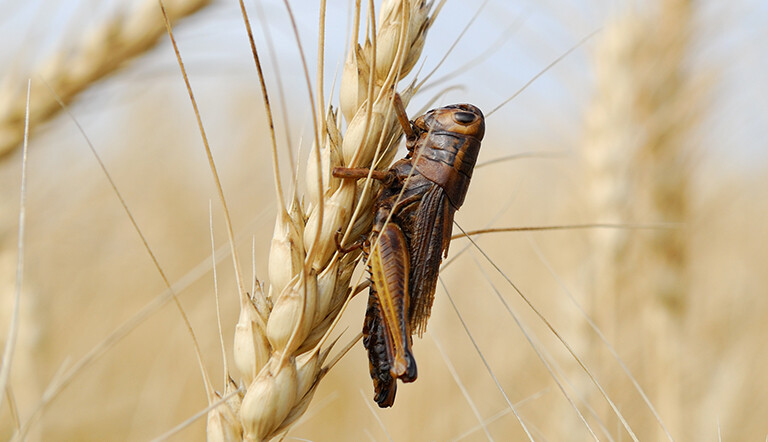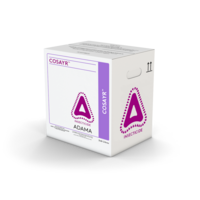
Pest Profile: Grasshopper

Description:
Many different grasshopper species can be found in Canada—roughly 85 species—but four are considered problematic across the prairies:
- Migratory grasshopper – Distinguished by the spur on its throat. Adults have black bands on their hind legs and are smaller in size (1”–1¼”). They eat almost anything.
- Two-striped grasshopper – Distinguished by two pale stripes that run from the back of the eyes to the tip of the forewings. Adult coloration can range from green to black, often with a mix of green and black markings. Prefers broadleaf plants and lush habitats. Rarely flies but is a strong walker.
- Packard's grasshopper – Distinguished by the lack of any prominent stripes in its grey appearance. There are two light-colored stripes behind the eyes, but they do not extend further.
- Clear-winged grasshopper – Distinguished by mottled forewings and transparent hindwings, which provide a camouflage pattern. Adults appear yellow to brown in color and primarily feed on cereal crops.
There has been a shift in populations over the past two years, with migratory and two-striped grasshoppers causing a significant portion of the damage. Early grasshoppers typically feed on pastures and rangelands and are not usually a problem in cereal crops. If they take flight before June, they are generally not considered pests. Warm and dry conditions accelerate their development.
Damage (caused by both nymphs and adults):
- Feed by removing all types of plant material.
- Damage increases as nymphs progress through their instars toward adulthood.
- Several consecutive years of hot, dry weather can lead to significant population increases.
Lifecycle:
- Grasshoppers overwinter as eggs, laid in pods in the soil. Each pod can contain anywhere from 8 to 150 eggs, which hatch the following spring when temperatures reach approximately 4°C.
- There is one generation per year.
- Problematic species typically hatch in late May to early June.
- Multiple hatching periods can occur due to temperature fluctuations.
- Nymphs progress through several instars before reaching adulthood. Advance thru instars as nymphs reaching adulthood.
Economic Thresholds and Control Options
Scouting:
A sweep net is not required. Begin scouting when environmental conditions—such as warm, dry weather—are present.
Control Options:
Contact insecticides are highly effective during the early nymph stages. However, systemic products are recommended for longer residual control and when dealing with more advanced stages.
ADAMA’s Portfolio:
| Product/Active Ingredient | Registered Crops |
|
Lambda-cyhalothrin – SILENCER® 120 EC or ZIVATA® (Contact only) |
Canola, Cereals, Pulses, Corn & Potato |
|
Chlorantraniliprole – COSAYR® (Provides residual control at higher rates) |
Canola, Cereals, Pulses, Corn & Potato |
Referenced literature and additional information:
Ministry of Agriculture ad Agri-Food Canada (2018). Field Crop and Forage Pests and their Natural Enemies in Western Canada: Identification and Management. https://publications.gc.ca/collections/collection_2018/aac-aafc/A59-23-2018-eng.pdf
Ministry of Agriculture ad Agri-Food Canada Grasshopper Identification and Control Methods to Protect Crops and the Environment. https://publications.gc.ca/site/eng/9.692754/publication.html
Saskatchewan Ministry of Agriculture. (2024). 2024 Crop Diagnostic Handbook. https://publications.saskatchewan.ca/#/products/118582
Saskatchewan Ministry of Agriculture. (2025). Guide to Crop Protection 2025. https://www.saskatchewan.ca/business/agriculture-natural-resources-and-industry/agribusiness-farmers-and-ranchers/crops-and-irrigation/crop-guides-and-publications/guide-to-crop-protection
Related Products

COSAYR®
A long-lasting diamide insecticide, which quickly controls chewing insects.

SILENCER® 120 EC
Most trusted active ingredient used in Western Canada to control a wide range of insects in field, tree fruit and horticulture crops.

ZIVATA®
An innovation in insect control giving you the same trusted results in a more sustainable formulation with a better user experience.
